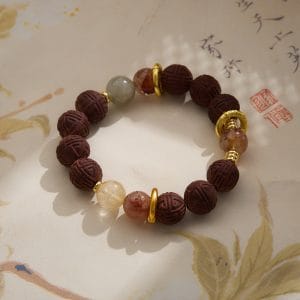The Quiet Revolution: Handicrafts in a Mass-Produced World
In an era increasingly dominated by the relentless pace of technological advancement and the sterile efficiency of mass production, the quiet, deliberate art of handicrafts stands as a profoundly poignant counterpoint to modern consumer culture. These meticulously handmade objects—whether they be intricately woven textiles, thoughtfully carved wood, skillfully forged metal, or beautifully painted ceramics—carry within them not just functional purpose, but entire universes of stories, traditions, and a tangible, almost sacred connection to human ingenuity and expression. The true value of handicrafts extends far beyond their immediate aesthetic appeal or surface-level utility; they serve as vital vessels of cultural identity, economic resilience, environmental mindfulness, and profound personal satisfaction. As society accelerates toward ever-greater speeds of consumption and disposal, the slow, intentional, deeply human process of creating by hand offers a restorative balance to our souls, reminding us of the depth, meaning, and spiritual nourishment embedded in objects made with care, skill, and love.
Cultural Archives in Material Form
Handicrafts serve as living, breathing archives of cultural heritage, preserving techniques, motifs, and knowledge systems that have been lovingly passed down through countless generations. In communities around the world, from the remote mountains of Peru to the bustling markets of India, traditional crafts represent a direct, unbroken link to ancestral practices, embodying historical narratives, spiritual beliefs, and deeply held social values that define collective identity. The intricate, symbolic patterns of Native American beadwork, for instance, or the culturally significant designs woven into West African Kente cloth, are never merely decorative; they serve as visual languages that communicate identity, social status, community ties, and spiritual beliefs. When these crafts are actively practiced, taught, and appreciated, they help sustain indigenous languages, rituals, and knowledge systems that might otherwise fade into obscurity under the homogenizing pressure of globalization. Thus, consciously supporting handicrafts becomes an act of cultural conservation and respect, ensuring that diverse artistic expressions and ways of knowing continue to enrich our global human tapestry for generations to come.
Economic Empowerment Through Artisanry
On an economic level, handicrafts possess the transformative power to empower artisans, particularly those living in rural or marginalized areas, by providing sustainable livelihoods that exist independently of large-scale industrial systems. Many craft traditions are intrinsically rooted in local materials and skills, which reduces dependence on imported goods and fosters community self-reliance and resilience. Through fair trade initiatives and artisan cooperatives, we have seen remarkable demonstrations of how handicrafts can drive meaningful community development, offering women, indigenous groups, and other vulnerable populations genuine opportunities for financial independence, social mobility, and cultural affirmation. By consciously choosing handmade products over mass-produced alternatives, consumers actively contribute to building a more equitable and humane economy—one where creativity, skill, and human labor are valued fairly, thus directly countering the exploitative practices and environmental degradation often associated with conventional factory production.
A groundbreaking study published in the Journal of Cultural Economics (2023) has provided compelling empirical evidence supporting the socioeconomic value of handicrafts. The research, led by Dr. Elena Torres, surveyed over 500 artisan communities across 15 diverse countries and found that active engagement in craft production correlated strongly with increased household incomes, enhanced gender equality, and stronger preservation of intangible cultural heritage. The study emphasized that handicrafts are not nostalgic relics of a romanticized past, but rather dynamic, viable contributors to sustainable development, particularly valuable in the face of globalization’s homogenizing forces. This research underscores the critical importance of integrating craft economies into broader development strategies.
Environmental Stewardship and Sustainability
From an environmental perspective, handicrafts frequently align with ecological principles of sustainability, utilizing renewable, local resources and generating significantly less waste compared to energy-intensive industrial manufacturing. Artisans typically employ age-old techniques that are inherently low-impact, such as natural dyeing processes using plant-based pigments, hand-weaving on simple looms, or creative upcycling of materials that might otherwise be discarded. This approach contrasts sharply with the enormous carbon footprint of mass production, which relies on energy-intensive processes, long supply chains, and the creation of disposable consumer goods designed for short lifespans. By consciously favoring handmade items, we support a slower, more thoughtful consumption model that honors ecological balance, reduces strain on planetary resources, and fosters a deeper appreciation for the materials and processes that bring objects into being.
The Psychology of Making and Owning
On a deeply personal level, both creating and owning handicrafts offers profound psychological and emotional benefits that are increasingly rare in our digital, fast-paced world. The process of creating handicrafts fosters mindfulness, creativity, and a authentic sense of accomplishment that cannot be replicated by passive consumption. The repetitive, tactile nature of crafts like knitting, pottery, or woodworking can be genuinely meditative, reducing stress, anxiety, and promoting overall mental well-being by anchoring us in the present moment. Similarly, owning and using handmade objects enriches daily life with uniqueness and character; each slight imperfection or variation tells a story of human effort and individuality, transforming these items into cherished heirlooms rather than transient commodities. This emotional resonance deepens our relationship with the material world, encouraging us to value quality, craftsmanship, and story over quantity, convenience, and disposability.
Educational Value and Skill Development
In educational contexts, integrating handicrafts into curricula at all levels can nurture essential cognitive and physical skills such as creative problem-solving, patience, perseverance, and fine motor development, while simultaneously teaching cultural appreciation and historical context. Hands-on learning through crafts helps students make meaningful connections between theoretical knowledge and practical application, fostering a more holistic understanding of art, history, mathematics, and sustainability principles. Moreover, working with one’s hands instills respect for manual labor and the arts, effectively countering the modern educational bias toward purely digital and academic pursuits while providing valuable alternatives for different learning styles and intelligences.
Challenges and Future Directions
Despite their immense cultural, economic, and personal value, handicrafts face significant challenges in the contemporary world, including competition from cheap imports, declining intergenerational transmission of skills, and the undervaluing of manual labor in increasingly digital economies. Supporting and preserving these traditions requires conscious, coordinated effort across multiple sectors—from consumers making ethical purchasing choices, to policymakers investing in craft education and infrastructure, to cultural institutions celebrating artisan heritage. Innovative initiatives like digital marketplaces connecting artisans directly with global audiences, cultural festivals showcasing traditional crafts, and artist residency programs that bridge traditional practices with contemporary design thinking can help ensure the relevance, adaptation, and survival of handicraft traditions for future generations.
Ultimately, handicrafts are far more than mere objects; they are profound expressions of human creativity, resilience, and connection across time and space. They remind us that behind every handmade item lies a maker’s hands, heart, history, and cultural heritage. In consciously valuing, preserving, and supporting handicrafts, we champion a vision of the world where diverse cultures are cherished, economies are inclusive and sustainable, environments are respected, and beauty is born of intention, care, and human connection—a world richly, meaningfully handmade.
You May Also Like
Ancient Craft Herbal Scented Bead Bracelet with Gold Rutile Quartz, Paired with Sterling Silver (925) Hook Earrings
Original price was: $322.00.$198.00Current price is: $198.00. Add to cartHandwoven Zhuang Brocade Tote Bag – Large-Capacity Boho Shoulder Bag
Original price was: $178.00.$154.00Current price is: $154.00. Add to cartThe Palace Museum Paper-Cut Light Art Fridge Magnets: Chinese Cultural Style Creative Gift Series
Price range: $27.00 through $36.00 Select options This product has multiple variants. The options may be chosen on the product pageBambooSoundBoost Portable Amplifier
Original price was: $96.00.$66.00Current price is: $66.00. Add to cart








